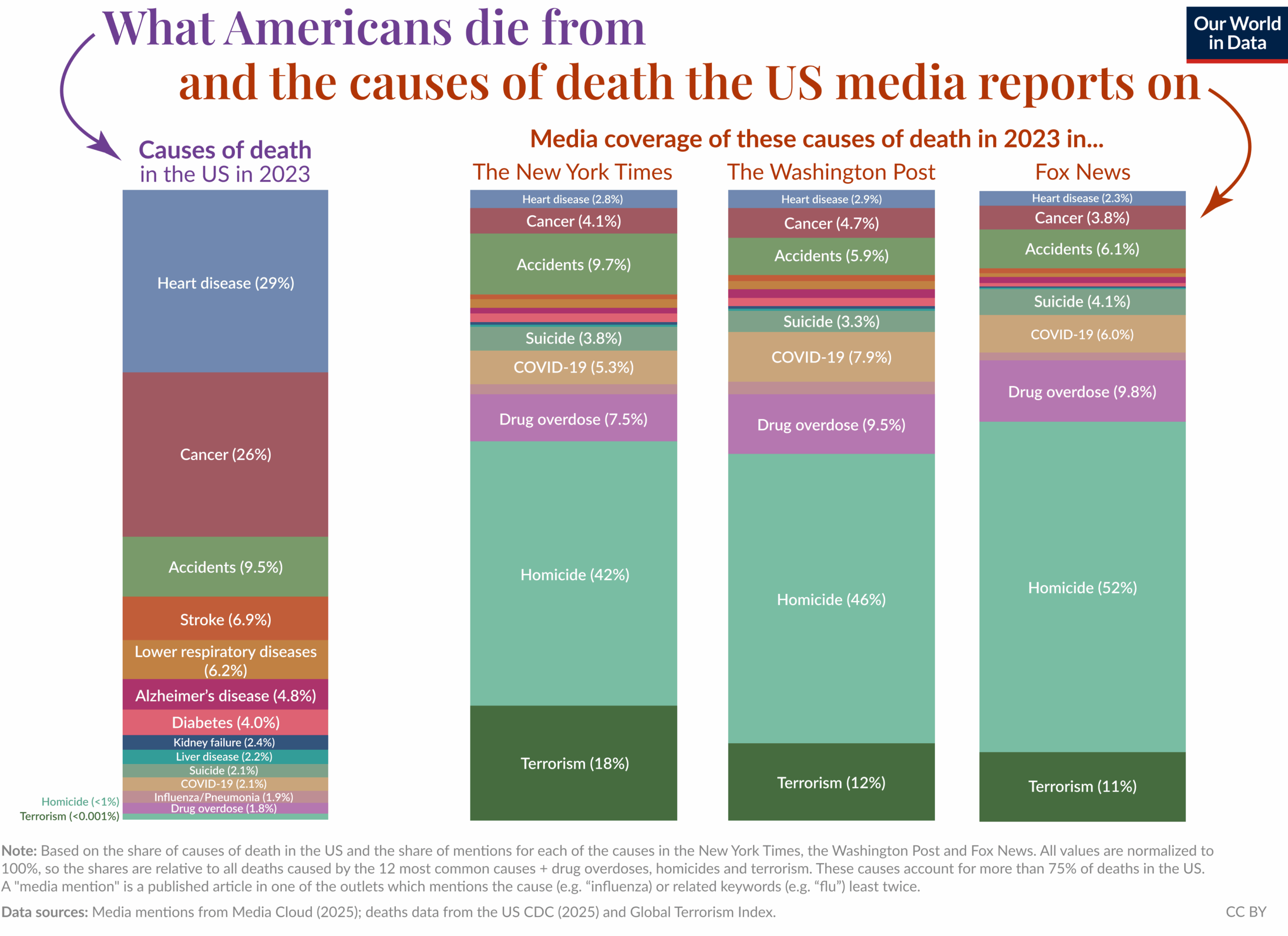
"Our World in Data compared causes of death in the United States against how much those causes are covered by the New York Times, Washington Post, and Fox News. The results are about what you would expect, based on coverage data from Media Cloud."
"Rarer events, like homicide and drug overdose, are reported more heavily, whereas everyday causes, like cancer and heart disease, are reported less. This, of course, is because the news covers things that are out of the ordinary, which is what readers and viewers are looking for on a by-the-minute timeline. Not many people care that mortality rates, which take more time to estimate than reporting on single events, are the same as yesterday."
Analysis comparing causes of death and media coverage in the United States finds that rarer, dramatic causes receive disproportionate attention while common, high-mortality causes receive less coverage. Homicide and drug overdose are reported more heavily, whereas cancer and heart disease receive comparatively little attention. News values prioritize out-of-the-ordinary events for immediate consumption on a by-the-minute timeline. Mortality rates require more time to estimate and often remain stable day-to-day. Frequent reminders that overall mortality is not steadily worsening can help correct public perception and provide beneficial perspective.
Read at FlowingData
Unable to calculate read time
Collection
[
|
...
]